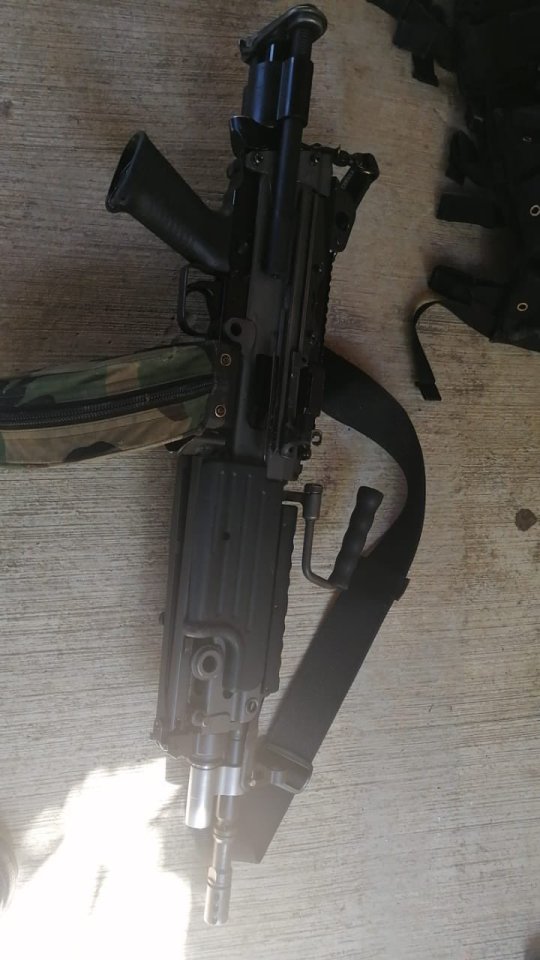Text
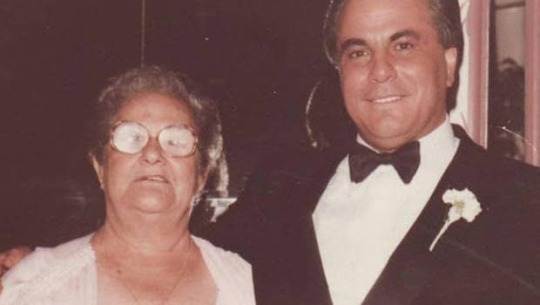
Philomena de Carlo Gotti and John Gotti - Gambino Crime Family - American Cosa Nostra
3 notes
·
View notes
Text

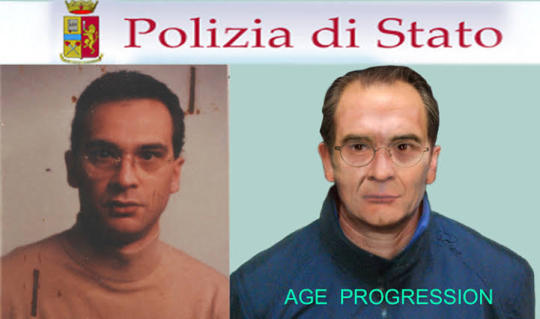
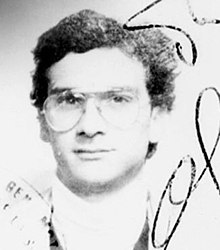
Matteo Messina Denaro -Castelvetrano - Ex Boss of Cosa Nostra until his arrest on January 16th 2023 -Sicilian Mafia
Matteo Messina Denaro ; (born 26 April 1962), also known as Diabolik (from an Italian comic book character), is a Sicilian Mafia boss from Castelvetrano. He was considered to be one of the new leaders of the Sicilian mob after the arrests of Bernardo Provenzano on 11 April 2006 and Salvatore Lo Piccolo in November 2007. The son of a Mafia boss, Denaro became known nationally on 12 April 2001 when the magazine L'Espresso put him on the cover with the headline: Ecco il nuovo capo della Mafia ("Here is the new Mafia boss").
Matteo Messina DenaroCapo di tutti capi de la Cosa NostraInformación personalOtros nombresDiabolikNacimiento26 de abril de 1962 (60 años)
Messina Denaro became a fugitive on the most wanted list in 1993; according to Forbes in 2010, he was one of the ten most wanted and powerful criminals in the world.With the deaths of Bernardo Provenzano in 2016 and Salvatore Riina in 2017, Messina Denaro was seen as the unchallenged boss of all bosses within the Mafia. After 30 years on the run, he was arrested on 16 January 2023 in a private clinic in Sicily's capital, Palermo.
ESPAÑOL
Matteo Messina Denaro (Castelvetrano, 26 de abril de 1962) es un mafioso siciliano, considerado actualmente el más poderoso de Italia y Europa, perteneció a la lista de Los diez fugitivos más buscados por el FBI, fugitivo desde hace 30 años, finalmente fue arrestado el 16 de enero de 2023.
Adoptó el sobrenombre Diabolik de su admirado personaje de cómic italiano. Después del arresto de Bernardo Provenzano era considerado el nuevo jefe absoluto de Cosa Nostra.Messina Denaro fue conocido mundialmente el 12 de abril de 2001, cuando la revista L'Espresso lo puso en portada con el siguiente titular: "Ecco il nuovo capo della mafia" (‘he aquí el nuevo capo de la mafia’).
1 note
·
View note
Photo






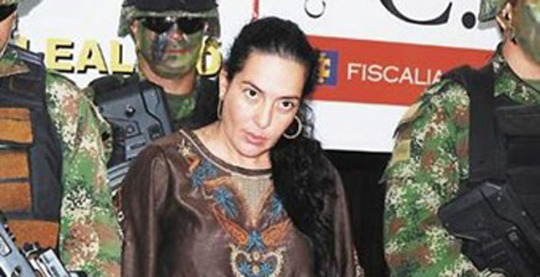
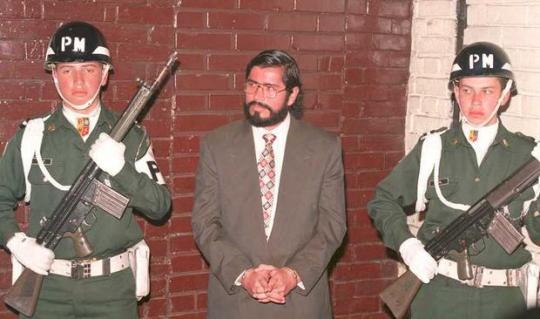

Cartel Norte Valle - Mafia Colombiana
Was a drug cartel that operated principally in the north of the Valle del Cauca department of Colombia, most notably the coastal city of Buenaventura. It rose to prominence during the second half of the 1990s, after the Cali and Medellín Cartels fragmented, and it was known as one of the most powerful organizations in the illegal drug trade. The drug cartel was led by the brothers Luis Enrique and Javier Antonio Calle Serna, alias "Los Comba", until its takedown in 2012 by the authorities of the United States.
It is alleged that the Norte del Valle cartel was formed after an event where the brothers Miguel Rodríguez Orejuela and Gilberto Rodríguez Orejuela, leaders of the Cali Cartel, came to an agreement with the Colombian government that if they surrendered themselves and their organization to the Colombian justice system they would be given perks, such as imprisonment in Colombian prisons for not more than five years and the promise of no expropriation of their substantial assets. It is stated that they organized a meeting with their lieutenants, main subordinates, and junior partners in the business, to inform them that the decision had already been taken to stop all the illicit business immediately. Those members who refused this sudden dissolution, including Carlos Alberto Rentería Mantilla, Juan Carlos Ortiz Escobar, Juan Carlos Ramírez Abadía, Diego León Montoya Sánchez, and Orlando Henao Montoya, formed the North Valley cartel.
ESPAÑOL
El Cartel del Norte del Valle fue el nombre dado por la Administración para el control de drogas (DEA) a la organización que se dedicó al tráfico de droga (cocaína), que operó principalmente en el norte del Valle del Cauca entre los años 1990 hasta 2008, localizándose al suroeste de Colombia. Tuvo un importante crecimiento a mediados de los años 1990, después de que los carteles de Medellín y Cali se fragmentaron, y fue conocida como una de las organizaciones más poderosas dedicadas al negocio de tráfico de droga; se caracterizó por su barbarie, que asoló de violencia las distintas regiones del país, la deslealtad de sus miembros traicionándose unos a otros para favorecer sus intereses personales ya fuese dentro del negocio o ante la justicia norteamericana.
El Cartel del Norte del Valle se formó en 1993 luego de la muerte de Pablo Escobar y la posterior captura de los hermanos Miguel y Gilberto Rodríguez Orejuela, jefes del Cartel de Cali.
Se organizaba una reunión por parte de los jefes del Cartel de Cali, donde el tema principal era el desmonte del negocio del tráfico de drogas en la región. Para lograr unas garantías de sometimiento a la justicia del Gobierno de Colombia y acabar con este negocio ilícito, les habían prometido un máximo de 5 años de cárcel sin que la policía hiciera extinción de dominio sobre sus propiedades. Hubo personas entre los asistentes que no estuvieron de acuerdo con ésta repentina disolución del Cartel de Cali, que compitió contra Pablo Escobar, jefe del Cartel de Medellín. Los asistentes a dicha reunión no llegaron a un acuerdo porque querían seguir con el negocio ilícito y posteriormente fueron estos los que conformaron el llamado Cartel del Norte del Valle.
Esta nueva organización era liderada por Orlando Henao Montoya.
6 notes
·
View notes
Photo



Vittorio Mangano - Palermo City - Porta Nuova - Mafia Siciliana
Was a member of the Sicilian Mafia or Cosa Nostra. He was well known as the stable keeper at the villa of Silvio Berlusconi in Arcore in the 1970s and as such Mangano is known as "lo stalliere di Arcore" (the stable keeper of Arcore). Berlusconi later became Prime Minister of Italy
From 1973 to 1975 Mangano was hired as stable keeper at the Villa San Martino owned by Silvio Berlusconi in Arcore, a small town near Milan. Mangano's real job is alleged to have been to deter kidnappers from targeting the tycoon's children. It was Berlusconi's right-hand man Marcello Dell'Utri who advised to take Mangano for the job. Mangano took care of the Villa's security and sometimes took Berlusconi's children to school.
During the Maxi Trial in the mid-1980s the Mafia turncoats (pentiti), Tommaso Buscetta and Salvatore Contorno, said Mangano was a "uomo d'onore" (man of honour) of Cosa Nostra and a member of the Porta Nuova family that was headed by Pippo Calò. Buscetta himself was a member of this family.
ESPAÑOL
Fue miembro de la mafia siciliana o Cosa Nostra. Era bien conocido como el guardián del establo en la villa de Silvio Berlusconi en Arcore en la década de 1970 y, como tal, Mangano es conocido como "lo stalliere di Arcore" (el guardián del establo de Arcore). Berlusconi más tarde se convirtió en primer ministro de Italia.
De 1973 a 1975, Mangano fue contratado como cuidador de establos en la Villa San Martino propiedad de Silvio Berlusconi en Arcore, una pequeña ciudad cerca de Milán. Se alega que el verdadero trabajo de Mangano fue disuadir a los secuestradores de atacar a los hijos del magnate. Fue la mano derecha de Berlusconi, Marcello Dell'Utri, quien aconsejó contratar a Mangano para el puesto. Mangano se ocupaba de la seguridad de la Villa y, en ocasiones, llevaba a los niños de Berlusconi a la escuela. Durante el Maxi Trial a mediados de la década de 1980, los traidores de la mafia (pentiti), Tommaso Buscetta y Salvatore Contorno, dijeron que Mangano era un "uomo d'onore" (hombre de honor) de la Cosa Nostra y miembro de la familia Porta Nuova que era encabezada por Pippo Calò. El propio Buscetta era miembro de esta familia.
4 notes
·
View notes
Photo


Nicola Ingarao - Palermo City - Porta Nuova - Mafia Siciliana
Actual regent but without "fanfare". Nicola Ingarao had been promoted on the pitch by Nino Rotolo. He had spent eight years in prison as befits a budding "boss" and, once released, he had become the trusted man of the Cosa Nostra triad in the district that has always kept the cash of the clans, that of Porta Nuova . he was born a robber, Ingarao, and died as a "man of honor", as a woman cried over her corpse.
Just four months before his last arrest, when Ingarao received the news in Nino Rotolo's garage. With them there was also Gianni Nicchi, the other protégé of the boss, who is still a fugitive today. The reorganization of the Porta Nuova family is on the agenda.
ESPAÑOL
Regente actual pero sin "fanfarria". Nicola Ingarao había sido ascendido en el campo por Nino Rotolo. Había pasado ocho años en prisión como corresponde a un "jefe" en ciernes y, una vez liberado, se había convertido en el hombre de confianza de la tríada Cosa Nostra en el distrito que siempre se ha quedado con el dinero de los clanes, el de Porta Nuova. nació ladrón, Ingarao, y murió como un "hombre de honor", como una mujer lloraba por su cadáver.
Apenas cuatro meses antes de su último arresto, cuando Ingarao recibió la noticia en el garaje de Nino Rotolo. Con ellos también estaba Gianni Nicchi, el otro protegido del jefe, que hoy sigue prófugo. La reorganización de la familia Porta Nuova está en la agenda.
3 notes
·
View notes
Photo

Salvatore Cucuzza - Palermo City - Porta Nuova - Mafia Siciliana
Salvatore Cucuzza, capo mandamento of the Porta Nuova mandamento until 1994, died last month. The news was learned during the trial on the State-Mafia negotiation. Arrested in 1996, he began his justice collaboration with the Palermo prosecutor Maurizio De Lucia. (07/10/2014)
ESPAÑOL
Salvatore Cucuzza, capo mandamento del mandamento Porta Nuova hasta 1994, murió el mes pasado. La noticia se conoció durante el juicio sobre la negociación Estado-Mafia. Detenido en 1996, inició su colaboración judicial con el fiscal de Palermo Maurizio De Lucia. (10/07/2014)
1 note
·
View note
Photo
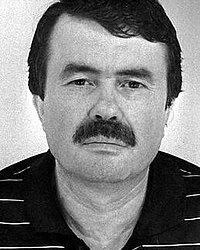
Salvatore Cancemi - Palermo City - Porta Nuova - Mafia Siciliana
Was an Italian mobster and member of the Sicilian Mafia from Palermo. He is the first member of the Sicilian Mafia Commission that turned himself in voluntarily to become a pentito, a collaborator with the Italian judicial authorities. Cancemi made controversial allegations about the collusion of Prime Minister Silvio Berlusconi and his right-hand man Marcello Dell'Utri with the Mafia.
Cancemi’s relatives had no tradition within the Mafia; his father had set up a thriving butcher shop. Cancemi was initiated into the Porta Nuova Mafia family in 1976 at the age of 34. His godfather was Vittorio Mangano. In 1985 he replaced Giuseppe Calò in the Cupola (the Sicilian Mafia Commission) and as head of the mandamento of Porta Nuova that included the Mafia families of Palermo Centro and Borgo Vecchio.
Cancemi was involved in the murders of anti-mafia magistrates Giovanni Falcone and Paolo Borsellino in 1992. He acted as a look-out for the team that placed and detonated the bomb at Capaci, which killed Falcone, his wife and three men of his escort. Cancemi initially denied having participated in the murder of Borsellino, but had to admit his involvement when other informants confirmed his participation.
Cancemi described the victory celebration that followed the Capaci bombing. Totò Riina ordered Champagne and while the others toasted, Cancemi and another future pentito Santino Di Matteo looked at one another and exchanged a gloomy assessment of Riina and their future: "This cuckold will be the ruin of us all."
ESPAÑOL
Fue un miembro de la mafia siciliana. Ha sido el primer miembro de la Comisión que voluntariamente se convirtió en pentito, es decir, un colaborador de la justicia. Cancemi hizo acusaciones controvertidas sobre la connivencia del primer ministro Silvio Berlusconi y su mano derecha Marcello Dell'Utri con la mafia, las cuales no han sido corroboradas.
La familia de Cancemi no tenía antecedentes de pertenencia a la mafia,; de hecho su padre había establecido una próspera carnicería. Cancemi fue iniciado en la familia mafiosa de Porta Nuova en 1976 a la edad de 34 años; su padrino fue Vittorio Mangano. En 1985 éste había sustituido a Giuseppe Calò como jefe de la familia de Porta Nuova, después de que Calò fuera arrestado y le reemplazó en la Cupola (la Comisión de la mafia) como jefe del mandamento de Porta Nuova que incluía también las familias de Palermo Centro y de Borgo Vecchio.
2 notes
·
View notes
Photo


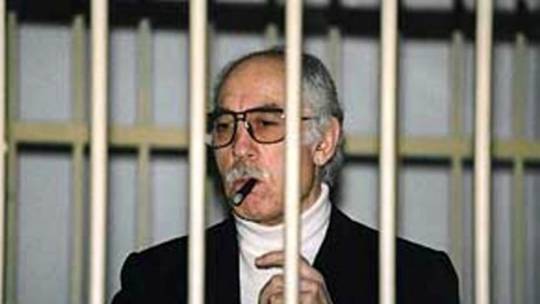
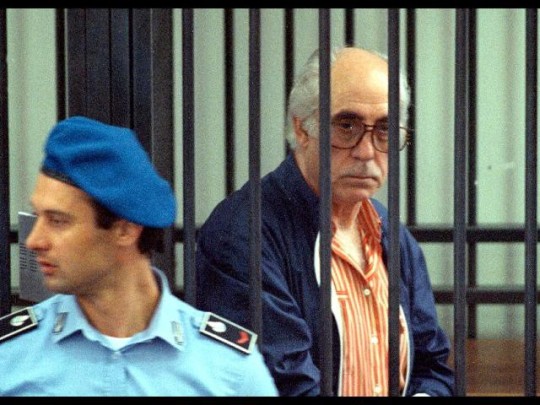
Giuseppe "Pippo" Calò - Palermo City - Porta Nuova - Mafia Siciliana
Is an Italian mobster and member of the Sicilian Mafia in Porta Nuova. He was referred to as the "cassiere di Cosa Nostra" (Mafia's Cashier) because he was heavily involved in the financial side of organized crime, primarily money laundering. He was arrested in 1985 and charged with ordering the murder of Roberto Calvi – nicknamed "Il banchiere di Dio" (God's banker) – of the Banco Ambrosiano in 1982, but was acquitted in 2007 due to "insufficient evidence" in a surprise verdict. After Calò was sentenced to 23 years' imprisonment as part of the 1986/87 Maxi Trial, he was sentenced to life imprisonment in 1989 for organising the 1984 Train 904 bombing. He was given several further life sentences between 1995 and 2002.
Born and raised in Palermo, the capital of Sicily, he was inducted into the Porta Nuova Mafia family at the age of 23 after carrying out a murder to avenge his father. By 1969, he was the boss of Porta Nuova, and amongst his men was the future informant (pentito) Tommaso Buscetta. Calò was on the Sicilian Mafia Commission, a group of the most powerful Mafia bosses in Sicily who regularly met, supposedly to iron out differences and solve disputes.
In the beginning of the 1970s, Calò moved to Rome. Under the guise of an antiques dealer and under the false identity of Mario Agliarolo he invested in real estate and laundered large proceeds of crime for many Mafia families. He was able to establish close links with common criminals of the Banda della Magliana, neo-fascist groups and members of the Italian intelligence agencies. According to reports, in the mid-1970s Calò strengthened relations with historical bosses of the Neapolitan Camorra, such as Lorenzo Nuvoletta and Vincenzo Lubrano.
During the early 1980s, he supported Salvatore Riina and the Corleonesi during the Second Mafia War that decimated the rival Mafia families.
ESPAÑOL
Nacido y criado en Palermo, fue incluido en la familia de Porta Nuova a la edad de veintitrés años después de llevar a cabo un asesinato para vengar a su padre. En 1969 era el jefe de la familia de Porta Nuova, y entre sus hombres se encontraba el futuro pentito Tommaso Buscetta. Calò formaba parte de la Comisión, grupo de los jefes mafiosos más poderosos de Sicilia, que habitualmente se reunían, supuestamente, para limar diferencias y resolver las controversias.
2 notes
·
View notes
Photo

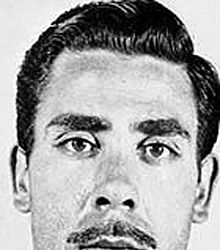
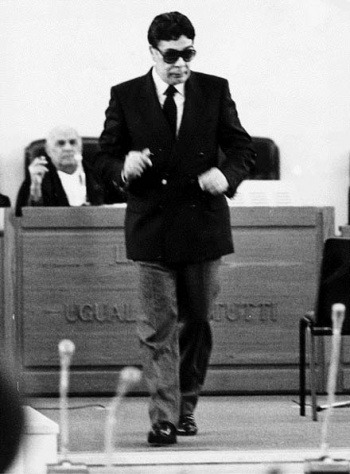
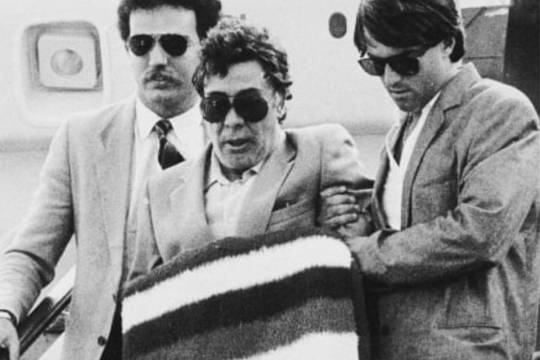

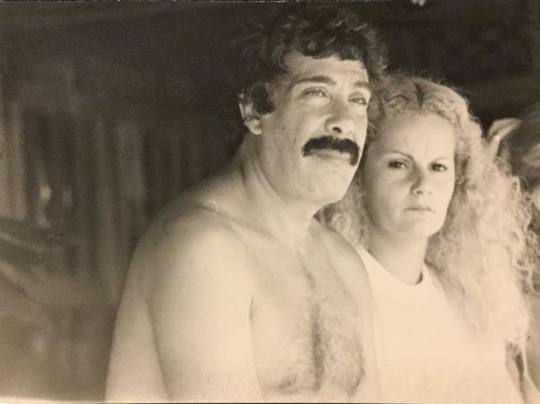
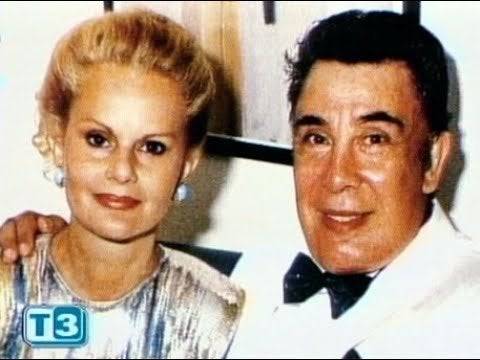
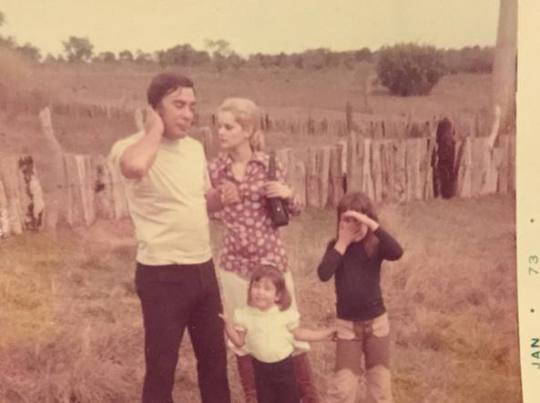

Tomasso Buscetta - Palermo City - Porta Nuova - Mafia Siciliana
Was an Italian mobster, a member of the Sicilian Mafia, who became one of the first of its members to turn informant (pentito) and explain the inner workings of the organization.
Buscetta participated in criminal activity in Italy, the United States and Brazil before being arrested and extradited from Brazil to Italy. He became disillusioned with the Mafia after the murders of several of his family members, and in 1984, decided to cooperate with the authorities. He provided important testimony at the 1986/87 Maxi Trial, the largest anti-Mafia trial in history. After the murder of the judges Giovanni Falcone and Paolo Borsellino, Buscetta gave further testimony to the Antimafia Commission linking Italian politicians to the Mafia.
Buscetta entered the Witness Protection Program in the United States, where he remained until his death in 2000.
Buscetta revealed information to Falcone for 45 days, explaining the inner workings and hierarchical structures of Cosa Nostra including the Sicilian Mafia Commission, that, until then, were unclear because of the strict code of silence. This became known as the "Buscetta theorem". He also revealed Mafia initiation rituals. However, Buscetta refused to speak with Falcone of the political ties of Cosa Nostra because, in his opinion, the State was not ready for statements of that magnitude, and proved to be quite general on that subject.
In December 1984, he was extradited to the United States where he received a new identity from the government, an American citizenship and was placed in the Witness Protection Program in exchange for new revelations against the American Mafia.
In mid-1992, following the bomb attacks in which Falcone and Borsellino were killed, Buscetta began to speak of the political ties of the Cosa Nostra with magistrates, accusing Salvo Lima, killed a few months earlier, and Giulio Andreotti of being the main political referents of the organization; in particular, he reported that he had known Lima personally since the late 1950s, and had met him last in 1980, and also reported that he had learned that the murder of the journalist Mino Pecorelli in 1979 would have been carried out in the Andreotti's interest.
During a trial in 1993, the Mafia member Salvatore Cancemi confessed to Buscetta that he had strangled two of Buscetta's sons to death. After the trial, Buscetta embraced Cancemi and said: "You could not refuse the order. I forgive you because I know what it means to be in Cosa Nostra.
ESPAÑOL
Fue un mafioso siciliano. Si bien no fue el primer pentito (informante) del programa de protección de testigos, es ampliamente reconocido como el primer individuo importante que rompe con la omertà. Muchos otros mafiosos seguirían su ejemplo.
Lo vuelven a arrestar en 1983, y Buscetta es enviado nuevamente a Italia. Intentó suicidarse, y al no tener éxito decide que estaba muy desilusionado de la mafia. Buscetta pidió reunirse con Giovanni Falcone y así comenzó su vida como informante. En Italia ayudó a los jueces Giovanni Falcone y Paolo Borsellino, permitiendo alcanzar una serie de éxitos en la lucha contra el crimen organizado (los dos jueces serían posteriormente asesinados por la mafia).
Fue el testigo estrella en el Maxi Proceso que permitió procesar y enviar a prisión a casi 350 miembros de la mafia.
1 note
·
View note
Photo

Vincenzo Buccafusca - Palermo City - Porta Nuova - Mafia Siciliana
The boss Vincenzo Buccafusca, under house arrest for health reasons, enlivened his days by ordering murders over the phone. This is what the Palermo police discovered after a year of environmental wiretapping, arresting at dawn 15 people allegedly affiliated with the Porta Nuova clan and accused of murder and mafia association.
The investigation would have led to the identification of the killers in the service of the clan and the debt collectors, but above all it aimed at the "regent" of the district, the forty-five-year-old Buccafusca, in fact.
The police arrested him on specific charges of having ordered the murder of Domenico Campora, an affiliate of the Brancaccio clan, who was murdered on May 28 last year. According to the police, the boss would have ordered attacks from his apartment, handled the extortions and indicated the people to be murdered.
ESPAÑOL
El Jefe Vincenzo Buccafusca, bajo arresto domiciliario por motivos de salud, amenizó sus días ordenando asesinatos por teléfono. Esto es lo que descubrió la policía de Palermo luego de un año de escuchas ambientales, arrestando en la madrugada a 15 personas presuntamente afiliadas al clan Porta Nuova y acusadas de asesinato y asociación mafiosa.
La investigación habría llevado a la identificación de los asesinos al servicio del clan y de los cobradores de deudas, pero sobre todo apuntaba al "regente" del distrito, la Buccafusca de cuarenta y cinco años, de hecho. La policía lo arrestó por cargos específicos de haber ordenado el asesinato de Domenico Campora, afiliado al clan Brancaccio, quien fue asesinado el 28 de mayo del año pasado.
Según la policía, el patrón habría ordenado ataques desde su departamento, manejado las extorsiones e indicado a las personas que serían asesinadas.
1 note
·
View note
Photo
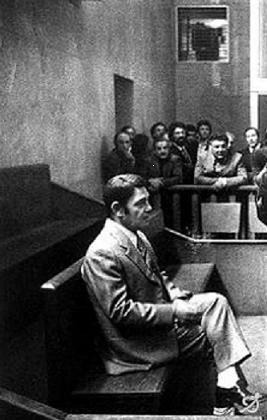

Gerlando Alberti - Palermo City - Porta Nuova - Mafia Siciliana
Nicknamed 'u Paccarè ("the imperturbable one"), was a member of the Sicilian Mafia. He belonged to the Porta Nuova family in Palermo headed by Giuseppe Calò.
Alberti was involved in numerous notorious Mafia events, such as the Ciaculli massacre in 1963, the Viale Lazio massacre in 1969, the disappearance of journalist Mauro De Mauro in 1970, and the killing of Chief Prosecutor Pietro Scaglione in 1971. He was one of the top mafiosi involved in cigarette smuggling and heroin trafficking in the 1970s. He once said of the Mafia: "Mafia! What is that? A kind of cheese?".
Alberti was one of the rising stars of the Mafia in the 1970s. He had a luxurious lifestyle with apartments in Milan and Naples, he owned a green Maserati and he and his men spent their evenings at nightclubs with expensive women. His position was confirmed on June 17, 1970, when the traffic police in Milan stopped an Alfa Romeo for speeding. In the car were Alberti, Tommaso Buscetta, Salvatore "Ciaschiteddu" Greco, Gaetano Badalamenti and Giuseppe Calderone. Unaware of the identity of the men in the car the police let them continue their journey. At the time, they were involved in a series of meetings about the future of Cosa Nostra. They decided to set up a new Sicilian Mafia Commission (the first one was dissolved after the Ciaculli massacre) – initially headed by a triumvirate consisting of Gaetano Badalamenti, Stefano Bontade and the Corleonesi boss Luciano Leggio.
On May 5, 1971, Pietro Scaglione, Chief Prosecutor of Palermo, was killed with his driver Antonino Lo Russo. It was the first time since the end of World War II that the Mafia had carried out a hit on an Italian magistrate. The police rounded up 114 mafiosi who would be tried in the second "Trial of the 114". Scaglione was killed in the district under Alberti’s command. Alberti had arrived from Naples just before the attack and left immediately afterwards. A barman who had confirmed to the police that Alberti was in Palermo while Scaglione’s murder was taking place was kidnapped and killed.
ESPAÑOL
También conocido como "U Paccarè" fue un miembro de la Mafia Siciliana. Pertenecía a la familia Porta Nuova en Palermo dirigida por Giuseppe Calò. Su sobrenombre fue "u Paccarè", el imperturbable.
Alberti estuvo involucrado en varios eventos de la Mafia, como la Masacre de Ciaculli en 1963, la Masacre de Viale Lazio en 1969, la desaparición del periodista Mauro De Mauro en 1970, y el asesinato de Pietro Scaglione en 1971. Fue uno de los mafiosos involucrados en el tráfico de cigarrillos y heroína en 1970. Una vez dijo sobre la Mafia: "¡Mafia! ¿Qué es eso? ¿Un tipo de queso?".
0 notes
Photo

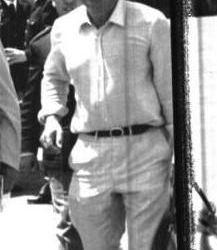
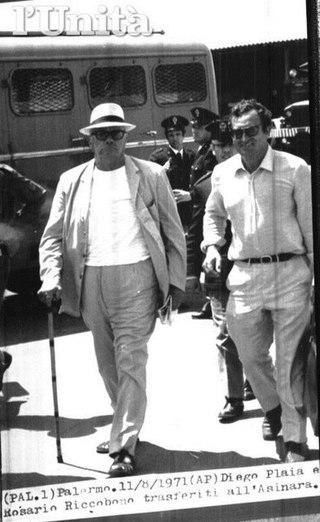

Rosario Riccobono - Palermo CIty - Partanna Mondello - Mafia Siciliana - Ex-Boss
Was a member of the Sicilian Mafia. He was the boss of Partanna Mondello, a suburb of Palermo, his native city. In 1974 he became a member of the Sicilian Mafia Commission.
As capo mandamento he became a member the Commission, the coordinating body of Cosa Nostra in Sicily, in 1974. He was initially close to other important heroin traffickers such as Stefano Bontade, Salvatore Inzerillo and Gaetano Badalamenti who opposed the rising power of Salvatore Riina and his Corleonesi. He tried to keep a neutral position, but became more and more isolated, trusting his alliance with the head of the Commission Michele Greco, who, however, secretly sided with the Corleonesi.
During the Second Mafia War that broke out in 1981 with the murder of Bontade and Inzerillo, Riccobono expediently sided with the Corleonesi. He lured a number of Stefano Bontade's friends to their deaths on behalf of Riina. Those that went along, such as Emanuele D’Agostino, were never seen again. One of the men he tried to ensnare was Salvatore Contorno, but Contorno was suspicious and fled into hiding. He subsequently went on to become a pentito, cooperating with the government.
A number of informants have said that Pino Greco was the man who personally garrotted Riccobono and subsequently orchestrated the murders of a dozen of Riccobono's associates and relatives.
ESPAÑOL
Fue un miembro de la mafia siciliana. Era el jefe de Partanna Mondello, un barrio de Palermo, su ciudad natal. En 1974 se convirtió en miembro de la Comisión.
Como capo mandamento se convirtió en miembro la Comisión en 1974, el órgano de coordinación de la Cosa Nostra en Sicilia. En un primer momento estaba del lado de importantes traficantes de heroína, como Stefano Bontate, Salvatore Inzerillo y Gaetano Badalamenti que se oponían al creciente poder de Salvatore Riina y los corleonesi. Trató de mantener una posición neutral, pero cayó en un creciente aislamiento, confiando en su alianza con el jefe nominal de la Comisión, Michele Greco, que, sin embargo, secretamente apoyaba a los corleonesi.
Durante la Segunda guerra de la mafia que estalló en 1981 con los asesinatos de Bontate e Inzerillo, Riccobono convenientemente cambió de bando y se alineó con los corleonesi. En nombre de Riina, atrajo a numerosos amigos de Bontate en emboscadas mortales.3 Uno de los hombres a los que trataron de atrapar era Salvatore Contorno, pero éste estaba siendo buscado por la justicia y había huido. Posteriormente, se convirtió en un pentito, cooperando con el gobierno.
0 notes
Photo


Gaspare Mutolo - Palermo CIty - Partanna Mondello - Mafia Siciliana
In 1992 he became a pentito (state witness against the Mafia). He was the first mafioso who spoke about the connections between Cosa Nostra and Italian politicians. Mutolo’s declarations contributed to the indictment of Italy’s former Prime Minister Giulio Andreotti and to an understanding of the context of the 1992 Mafia murders of the politician Salvo Lima and the magistrates Giovanni Falcone and Paolo Borsellino.
In 1965 he ended up in prison for the first time. In the Ucciardone prison in Palermo he shared a cell with Totò Riina, the future boss of the Corleonesi. Noticing the deference with which Riina was treated, Mutolo realised that his cellmate had to be someone important and ingratiated himself with Riina by letting him win at cards. When they both had left prison, Mutolo was Riina’s personal driver for a while – a position of great trust.
In 1973, Mutolo was initiated into the Partanna-Mondello family headed by Rosario Riccobono. "When I became a member, it was for me a new life, with new rules. For me only Cosa Nostra existed," he later recalled. He became the right-hand man of Riccobono and Riina’s trusted man for delicate missions. In 1976 and 1982, Mutolo was arrested again, and during one of his sojourns in prison, he became the cellmate of the old boss of the Corleonesi, Luciano Leggio (later he claimed that he had painted the pictures that are attributed to Leggio).
Thanks to his close ties with the Corleonesi, he survived the massacre that wiped out the old guard including former Corleonesi ally Riccobono of the Partanna-Mondello Mafia family at the end of 1982, in the midst of the Second Mafia War.
0 notes
Photo


Angelo La Barbera - Palermo City - Palermo Centro - Mafia Siciliana
Was a powerful member of the Sicilian Mafia. Together with his brother Salvatore La Barbera he ruled the Mafia family of Palermo Centro. Salvatore La Barbera sat on the first Sicilian Mafia Commission that was set up in 1958 as the capo mandamento for Mafia families of Borgo Vecchio, Porta Nuova and Palermo Centro.
Gaia Servadio, an English/Italian journalist who wrote a biography on Angelo La Barbera, described him as the symbol of the quick, clever gangster. The new post-war mafioso who in the end became the victim of the many politicians he himself had built. He represented the proletariat who tried to become mafioso, middle class, and ultimately did not succeed.
Angelo and Salvatore La Barbera were born in the slums of the neighbourhood of Partanna-Mondello in Palermo. Their father was an itinerant charcoal burner and vendor. They started with petty larceny and murder and raised themselves to become prominent leaders of a new generation of mafiosi in the 1950s and 1960s who made their fortune in real estate transactions, cigarette smuggling and heroin trafficking. The brothers were bent on transcending the indignities of their poverty. Angelo la Barbera became the protégé of a local Mafia boss, and by 1952 they had organized a building supply company. They then murdered the right-hand man to the contractor Salvatore Moncada, so that they could become the construction entrepreneur’s lieutenants.
By 1955 Angelo La Barbera had become the vice-boss and de facto head of the Palermo Centro cosca. One of the La Barbera’s hitmen was Tommaso Buscetta, who subsequently became a pentito (collaborating witness) in 1984.
ESPAÑOL
Encabezó la familia mafiosa de Palermo Centro. Salvatore La Barbera tenía una silla en la primera Comisión que se creó en 1958 como capo mandamento para las familias mafiosas de Borgo Vecchio, Porta Nuova y Palermo Centro.
Gaia Servadio, una periodista italiana establecida en Gran Bretaña que escribió una biografía sobre Angelo La Barbera, le describió como el símbolo del gánster eficiente e inteligente; un nuevo mafioso de posguerra que al final se convertiría en víctima de muchos políticos que él mismo había aupado. Representaba el proletariado, que trató de convertirse en mafioso, de clase media, pero que en última instancia no tendría éxito.
0 notes

